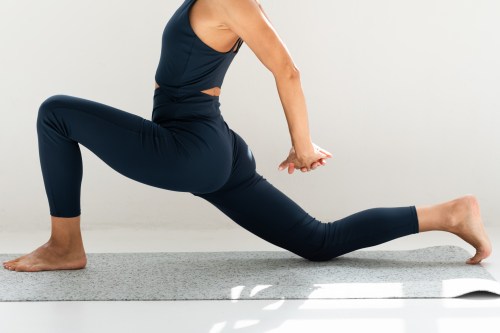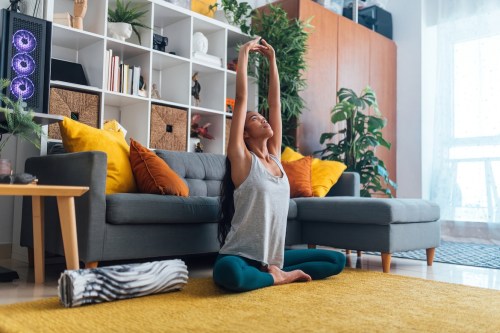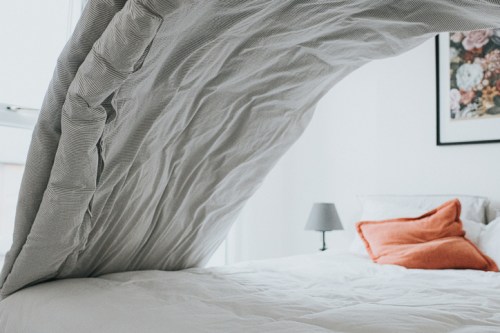As everyone stays put at home during the COVID-19-induced sheltering in place, our bodies are getting more tight and achey than seemingly ever before. While foam rolling and percussive massage therapy (a la a Theragun, for instance) are great remedies, you can also turn to your elbows and knees to massage things out, which is an easy technique that yogis swear by.
“Self-massage techniques are a way to access trigger points and rid your body of tension all on your own,” says yoga instructor Lindsay Pirozzi. Since trigger point therapy is typically done by a licensed massage therapist, knowing how to do it with parts of your own body is particularly helpful (especially as the world is stuck social distancing). “Incorporate certain self-assisting massage techniques while you flow to help dissolve stress, pain, or muscle tension with more efficiency.”
Some prime examples of yogic self-massage tools? Your knees are big ones, as are your elbows, since they’re bony and can help you get to more specific nooks and crannies of muscle tension. Keep scrolling for Pirozzi’s tips for using yoga for self-massage, below.
Yoga self-massage techniques to try
1. For your forehead: Begin in child’s pose, then anchor your forehead to the ground. “You can slowly move it side to side, from temple to temple, with as much or as little pressure as possible,” says Pirozzi, who recommends softening the eyelids and connecting to your breath while doing so. “The space between your eyes is where your mind’s eye chakra exists, and this gentle, grounded self-massage can help bring us back to neutral so that we can view the world with equanimity.”
2. For your forearms: In tabletop position, shoulders under wrists, knees under hips, you can use your knees to massage your forearms. “Place your right forearm to the floor, parallel to the top edge of your mat, and gently guide one of your knees forward to meet your forearm,” says Pirozzi. “Take time to assess which knee feels most comfortable for you to use, then explore from forearm to wrist and back up again, applying as much pressure as you’d like.”
3. For your calves: From the same starting position, you can use your knees to massage out your calves. Take one knee and cross it over to the opposite leg, sawing your knee forward and backward along the backside of your opposite calf. Go up and down, back and forth, applying as much pressure as you’d like to massage out calf tightness.
4. For your groin: “From head-to-knee pose, you can find a very healing acupressure point in the body,” says Pirozzi. From a seated position, the bottom of one foot should be against the opposite inner thigh. “The inseam of the leg where your heel connects to your inner thigh is full of healing potential,” she says. “The digging in of the heel helps to access a trigger point that works wonders for your nervous system.” Do this move to relieve tightness and de-stress.
5. For your spine: Pirozzi also recommends a gentle massage of your spine to help alleviate all of the compression and tightness that you can accumulate throughout a day of sitting. From lying on your back, grab your knees into your chest. “Start by moving or swaying side to side to massage your sacrum and lumbar spine,” she says. “Then find more momentum back and forth, massaging the entire length of your spine. Go fast or slow, and pause when the feet come over your head and spend as much time as you’d like nourishing your spine.”
Also try these yoga poses that feel like a massage, below:
Consider incorporating yoga bind poses into your flow to combat rounded shoulders. Also try these yoga breathing techniques that bring you an instant sense of calm.
Sign Up for Our Daily Newsletter
Get all the latest in wellness, trends, food, fitness, beauty, and more delivered right to your inbox.
Got it, you've been added to our email list.











